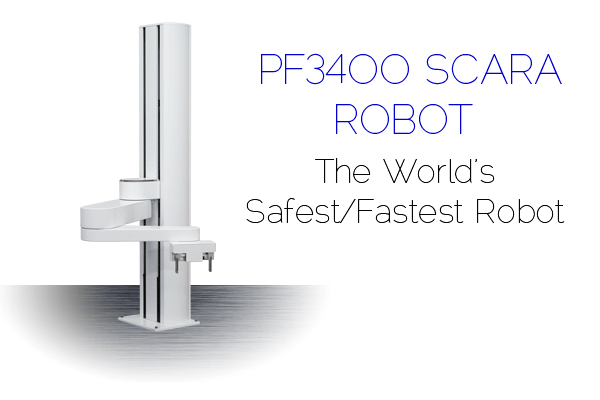|
WHAT IS A COLLABORATIVE ROBOT? For years, traditional industrial robots focused on increasing payload capacity, speed and repeatability. Over this time, these robots have gotten bigger, stronger and more dangerous while still relying on their complex proprietary programming languages. Now a new generation of “collaborate” robots that focus on built-in safety and ease-of-use have enabled non-traditional robot users to automate processes that could not be practically addressed before. These collaborative robots are safe to use without shielding, which permits them to be deployed more easily and in environments where space and access to the workcell while the robot is operating are beneficial or critical. Also, by simplifying the programming environment, users without robot programming experience can implement simple workcells quickly and efficiently. |
 |
|
WHAT MAKES A ROBOT COLLABORATIVE?
Most “quasi” collaborative robots share the same core design features as traditional industrial robots and thus can generate high forces that can injure people and damage equipment. In order to achieve a level of safety, these “quasi” collaborative robots use a variety of methods including: adding expensive sensors to the robot, encasing the robot in soft foam and significantly slowing the robot whenever people are present at the expense of consistent, fast cycle times. Precise's collaborative robots are unique in that they have been designed from the ground up as inherently safe. They are incapable of exerting enough force to hurt users, even when the robots are run at high speeds that are comparable to traditional industrial robots. These robots achieve both speed and safety by combing low gear ratios, very low friction back drivable axes, very low moving masses and advanced motion control technology. This results in inherently safe robots that can be deployed without shielding and can safely work side-by-side with personal without slowing down, which is the real goal and benefit of collaborative robots. |
|
HOW DO YOU DETERMINE IF A ROBOT IS TRULY SAFE?
Since the introduction of industrial robots, Category 3 has been the gold standard in safety. This standard typically requires that an operator not be in the workcell during normal operation and that the robot move very slowly when an operator is teaching the robot. All Precise collaborative robots satisfy Category 3, but this is not sufficient to qualify them as collaborative robots. Recently, the ISO/TS 15066 Standard on Collaborative Robots has been developed to define the robot’s maximum safe contact forces if it collides with a person in free space or pins a part of a person against a surface. Precise collaborative robots were the first (and possibly still the only robots) that have been verified by TUV to exert forces that are within the 15066 guidelines. (Please note that your complete application must be evaluated for safety.) Precise has over 1,000 collaborative robots that have been evaluated by OEM and end user safety groups and have been approved for use without shielding in a variety of different applications including: small parts handling, PCB board testing, consumer electronics and life science. |
|
HOW DO YOU PICK A COLLABORATIVE ROBOT?
Nearly all collaborative robots from other suppliers are six-axis articulated robots. Many are traditional robots with reduced speeds to limit their force or outfitted with expensive sensors that greatly increasing their cost. Precise's line of Industrial Collaborative Robots is the first to offer a full range of robot geometries specifically designed for collaborative use. Our SCARA, Cartesian and six-axis robots provide a wide range of configurations that allow the user to pick the specific geometry that best fits their needs with just the right number of axes (from one to six) instead of using a six-axis configuration in all situations. With Precise's Industrial Collaborative Robots, users get collaborative ease-of-use features and industrial performance, and just what they need at a reasonable price. |
|
HOW DO YOU PROGRAM A COLLABORATIVE ROBOT?
To simplify setup for new users, many collaborative robots use a programming environment that is easy-to-use but has limited features. Precise Automation's collaborative robots offer the flexibility of both an easy-to-use web based interface as well as an optional advanced programming environment as capable as any industrial robot. The easy-to-use Guidance Motion interface is accessible from any web enabled device and allows technicians or operators to quickly and easily setup and teach the robot to perform real work. |

